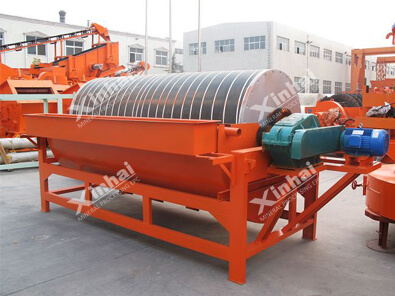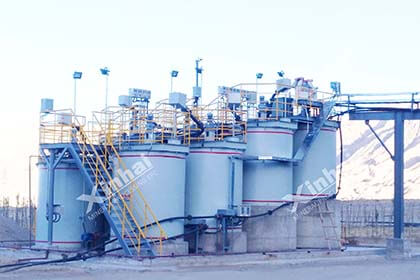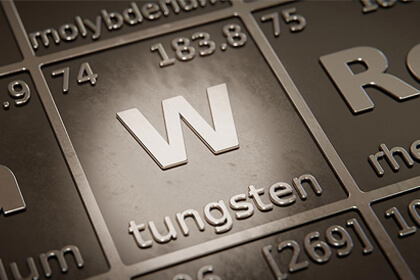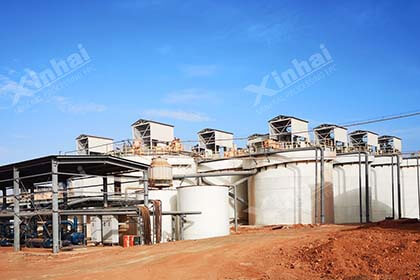Iron Ore Processing: From Extraction to Manufacturing
 Essow
Essow
 Apr 26, 2024
Apr 26, 2024
 70
70
If you want to know more details about equipment, solutions, etc, please click the button below for free consultation, or leave your requirements!
Iron ore processing is a crucial step in the production of steel, one of the most essential materials in modern society. Iron ore, a naturally occurring mineral composed primarily of iron oxides, is mined and processed to extract iron for various industrial applications. This article provides a comprehensive overview of the iron ore processing journey, from extraction to manufacturing, highlighting the key stages and technologies involved.
01 Exploration and Extraction
BackExploration and extraction are the initial stages in the iron ore processing journey. These stages involve the identification and assessment of potential iron ore deposits and the subsequent extraction of the ore from the ground. Let's delve deeper into these processes:
1. Exploration
Exploration is the process of locating and evaluating potential iron ore reserves. It involves a combination of geological surveys, remote sensing techniques, and drilling to identify areas with economically viable deposits. Here are some key aspects of the exploration stage:
a. Remote Sensing: Remote sensing techniques, including satellite imagery and aerial surveys, are used to identify areas with geological features indicative of iron ore deposits. These techniques help geologists narrow down potential target areas for further investigation.
b. Geological Mapping: Geologists conduct detailed field surveys to map the geology of the target areas. They study rock formations, examine surface features, and collect samples to understand the geological history and potential mineralization in the area.
c. Drilling: Once a promising area is identified, drilling is conducted to obtain core samples from beneath the surface. Core samples provide valuable information about the composition, structure, and quality of the ore deposit. Geologists analyze these samples to determine the presence and extent of iron ore.
d. Resource Evaluation: Based on the data collected from remote sensing, geological mapping, and drilling, geologists estimate the size, grade, and economic viability of the iron ore deposit. This evaluation helps determine whether further development is warranted.
2. Extraction
After identifying a viable iron ore deposit, the extraction process begins. The extraction methods used depend on factors such as the depth of the deposit and the geology of the surrounding area. Here are two common extraction methods:
a. Open-Pit Mining: Open-pit mining is employed when the iron ore deposit is close to the surface or forms a large, easily accessible ore body. In this method, large-scale excavation machinery, such as excavators and haul trucks, is used to remove the overburden (surface material) and expose the ore deposit. The ore is then extracted and transported to the processing plant.
b. Underground Mining: Underground mining is employed when the iron ore deposit is located at significant depths. It involves creating underground tunnels and shafts to access the ore. Specialized mining equipment, such as drills, loaders, and haulage vehicles, is used to extract the ore from underground. The extracted ore is transported to the surface for further processing.
It's important to note that the choice between open-pit and underground mining depends on various factors, including the depth of the deposit, the ore quality, environmental considerations, and economic feasibility.
During the extraction process, it is common to encounter a combination of iron oxides, impurities, and gangue minerals. The extracted ore undergoes further processing to separate the valuable iron-bearing minerals from the impurities and gangue minerals, as described in the subsequent stages of iron ore processing.
Exploration and extraction are vital steps in the iron ore processing chain, as they determine the presence and viability of iron ore deposits. The use of advanced technologies, such as geospatial analysis, remote sensing, and drilling techniques, has significantly improved the efficiency and accuracy of exploration efforts. These advancements have played a key role in identifying new deposits and optimizing extraction methods, ensuring a steady supply of iron ore for the steel industry.
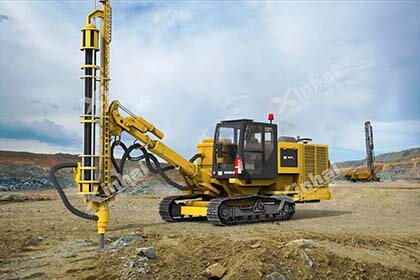
(Open-pit Downhole Drill)
02 Crushing and Screening
BackCrushing and screening are integral processes in iron ore processing that help prepare the mined ore for further beneficiation and downstream use. These processes involve breaking down the mined ore into smaller fragments and separating it based on size. Let's explore the crushing and screening stages in more detail:
1. Crushing
Crushing is the initial stage in the iron ore processing journey, where large chunks of ore are broken down into smaller fragments. The primary objective of crushing is to reduce the ore size for subsequent processing and improve the liberation of valuable minerals from the gangue.
a. Jaw Crushers: Jaw crushers are commonly used for primary crushing. They consist of a fixed plate and a movable plate, with the ore being fed between them. The movable plate moves back and forth, exerting pressure on the ore, which breaks it into smaller pieces.
b. Cone Crushers: Cone crushers are often used for secondary or tertiary crushing. They operate similarly to jaw crushers but have a different shape of the crushing chamber. Cone crushers are capable of producing finer-sized ore particles compared to jaw crushers.
The crushed ore obtained from the crushing stage is typically in larger size fractions and needs to be further processed through screening.
2. Screening
Screening is the process of separating the crushed ore into various size fractions. It involves passing the crushed ore through a series of screens with different-sized openings. The screens allow smaller particles to pass through while larger particles are retained. The main objectives of screening are to classify the ore into different size ranges and remove any oversize or undersize particles.
a. Vibrating Screens: Vibrating screens are commonly used in the screening process. They consist of a vibrating deck with screens of different mesh sizes. The ore is fed onto the vibrating screen, and the vibration separates the particles based on size. The undersize material passes through the screen openings, while the oversize material is transported for further crushing or size reduction.
b. Grizzlies: Grizzlies are robust screens with larger openings used to remove the larger-sized ore particles. They are typically placed at the beginning of the screening process to scalp off oversized material.
By crushing the ore, it is broken down into smaller fragments, which facilitates subsequent processing steps such as grinding and beneficiation. Screening ensures that the ore is classified into different size fractions, allowing for efficient downstream processing and ensuring that the ore meets the required specifications for further beneficiation or direct use.
The selection of appropriate crushing and screening equipment depends on factors such as the ore characteristics, desired product size, capacity requirements, and the specific processing objectives. Advances in technology have led to the development of more efficient and specialized crushing and screening equipment, enabling finer control over the size distribution of the crushed ore and improving overall process efficiency.
Crushing and screening are critical stages in the iron ore processing journey, as they prepare the ore for subsequent beneficiation processes. These stages help optimize the liberation of valuable minerals from the gangue, ensuring that the final product meets the desired specifications for use in steelmaking or other applications.
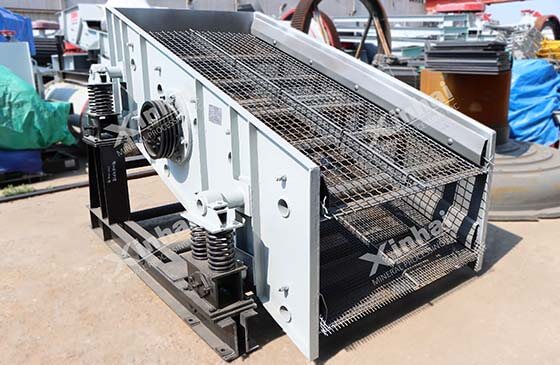
(vibrating screen)
03 Grinding and Beneficiation
BackGrinding and beneficiation are essential stages in iron ore processing that involve reducing the ore size and removing impurities to enhance the concentration of iron-bearing minerals. These processes aim to improve the quality and value of the ore for further utilization. Let's explore grinding and beneficiation in more detail:
1. Grinding
Grinding is a size reduction process that involves breaking down the ore into smaller particles to increase its surface area for subsequent beneficiation. The objective of grinding is to liberate the valuable iron-bearing minerals from the gangue and prepare the ore for efficient separation.
a. Grinding Mills: Grinding mills, such as ball mills and rod mills, are commonly used for grinding iron ore. These mills contain grinding media (steel balls or rods) that tumble and impact the ore, causing it to break into smaller particles. The choice of grinding mill depends on factors such as the desired product size, capacity requirements, and energy consumption.
b. Autogenous and Semi-Autogenous Mills: In some cases, autogenous (AG) and semi-autogenous (SAG) mills are used for grinding. These mills utilize the ore itself as the grinding media, reducing the need for additional grinding media. AG/SAG mills are typically used for coarse grinding, where large pieces of ore are efficiently broken down.
The grinding process reduces the ore size, which enhances the efficiency of subsequent beneficiation processes by increasing the surface area available for chemical reactions and physical separations.
2. Beneficiation
Beneficiation is the process of separating iron-bearing minerals from the gangue minerals and removing impurities to improve the iron grade and quality of the ore. Various techniques are employed based on the characteristics of the ore and the desired iron content. Here are some common beneficiation methods:
a. Gravity Separation: Gravity separation exploits the difference in density between the iron-bearing minerals and the gangue minerals. Techniques such as spiral concentrators, shaking tables, and centrifugal separators are used to separate the heavier iron-rich particles from the lighter gangue minerals.
b. Magnetic Separation: Magnetic separation utilizes the magnetic properties of iron ore minerals. High-intensity magnetic separators are used to separate the magnetic iron-bearing minerals from the non-magnetic gangue minerals. This technique is effective for removing strongly magnetic impurities from the ore.
c. Flotation: Flotation is a selective separation process that relies on the differences in the surface properties of the ore minerals. Chemical reagents are added to the ore slurry to selectively attach to and float the iron-bearing minerals while leaving the gangue behind. By controlling the pH, reagent dosage, and other parameters, the desired iron-rich concentrate is obtained.
d. Other Beneficiation Techniques: Depending on the specific ore characteristics, additional beneficiation techniques such as electrostatic separation, dense media separation, and bio-beneficiation may be employed.
The beneficiation process aims to increase the iron content and reduce impurities in the ore, resulting in a higher-quality concentrate suitable for further processing and utilization. The specific beneficiation method employed depends on factors such as the mineralogy of the ore, the presence of specific impurities, and the desired iron content.
Grinding and beneficiation are crucial steps in iron ore processing as they enhance the concentration of iron-bearing minerals and remove impurities. These processes contribute to improving the overall quality and value of the ore, making it suitable for various downstream applications, including steelmaking. Continuous advancements in grinding and beneficiation technologies aim to increase process efficiency, reduce energy consumption, and minimize the environmental impact of these stages in iron ore processing.
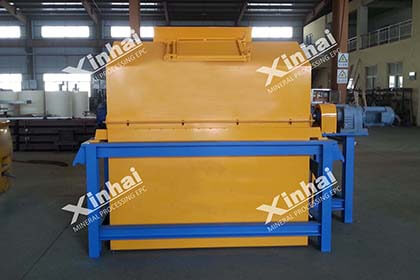
(Dry Magnetic Separator)
04 Dewatering and Stockpiling
BackOnce the ore is beneficiated, it is often necessary to remove excess moisture through dewatering processes. Thickening and filtration techniques are employed to separate the water from the concentrated ore. This results in a more manageable and transportable product.
The dewatered iron ore is then stockpiled to await further transportation and processing. Stockpiling ensures a consistent supply of feed material to downstream processes and acts as a buffer during fluctuations in demand or supply.
05 Pelletization or Sintering
BackBefore iron ore can be used in steel production, it often undergoes an additional step called pelletization or sintering. Pelletization involves forming small balls or pellets by agglomerating the fine iron ore particles with a binder, such as bentonite clay. These pellets are more suitable for use in blast furnaces due to their improved handling and mechanical properties.
Sintering, on the other hand, involves heating the fine iron ore particles to form a porous mass without the use of binders. The sintered product, known as a sinter, is then crushed and screened to produce the desired particle size for use in the blast furnace.
06 Ironmaking
BackThe final stage in iron ore processing is ironmaking, where the iron ore is transformed into molten iron through a process called reduction. The most common method of ironmaking is the blast furnace route. In a blast furnace, iron ore, coke (carbon), and fluxes (limestone or dolomite) are loaded into the furnace from the top.
The intense heat generated by the combustion of coke reduces the iron oxides in the ore to metallic iron. The limestone or dolomite reacts with impurities, forming a slag that floats on top of the molten iron. The molten iron, known as hot metal, is periodically tapped from the bottom of the furnace and further processed in steelmaking.
07 Steelmaking
BackHot metal from the blast furnace is refined and converted into steel in the steelmaking process. Several methods, including basic oxygen furnace (BOF) and electric arc furnace (EAF), are used for steel production. In the BOF process, hot metal is combined with scrap steel and oxygen, which removes impurities and adjusts the carbon content to produce the desired steel grade. The EAF process uses electricity to melt scrap steel and other raw materials, including iron ore, to produce steel.
08Conclusion
BackIron ore processing is a complex and vital process that transforms raw iron ore into usable steel. From exploration and extraction to grinding, beneficiation, and ironmaking, each stage plays a crucial role in producing high-quality iron ore products. The advancements in processing technologies have made it possible to efficiently extract and utilize iron ore resources while minimizing environmental impacts. With the continued demand for steel, iron ore processing will remain a crucial industry, driving economic growth andsustaining various sectors worldwide. The ongoing research and development in this field aim to further optimize the processing techniques and reduce the environmental footprint associated with iron ore processing. As technology continues to evolve, we can expect more efficient and sustainable methods to be implemented, ensuring a steady supply of iron ore for the steel industry while minimizing the impact on our planet.
 +86 13810565920
+86 13810565920 xlyin@xinhaimining.net
xlyin@xinhaimining.net




 Message
Message Chat Now
Chat Now


